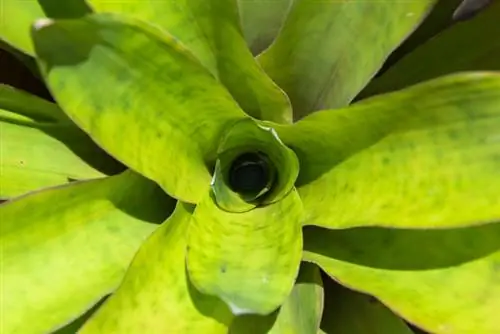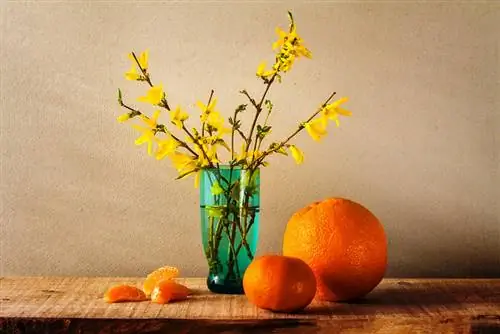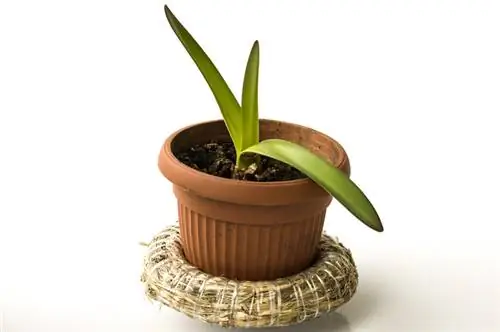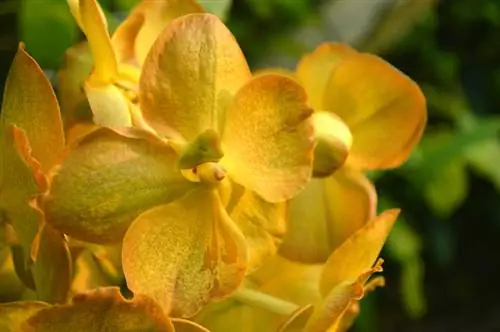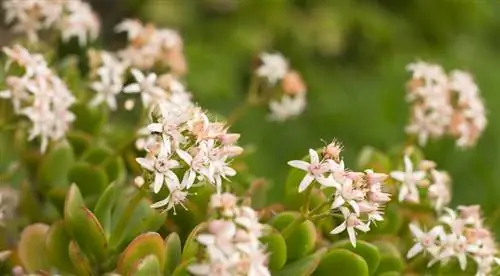- Author admin [email protected].
- Public 2023-12-16 16:46.
- Last modified 2025-01-23 11:20.
Buying a flowering bromeliad in the store is not difficult. Getting young plants grown from cuttings to flower can sometimes be a challenge. It's good to know that there is a simple trick to get the flowering going. You can find out how the plan works here.
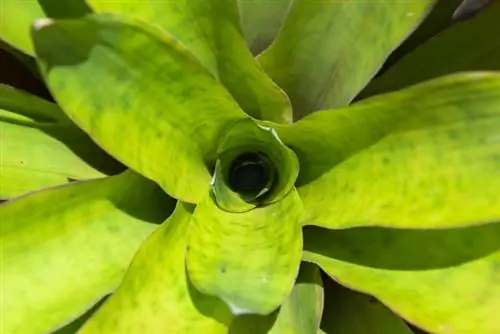
How can I make a bromeliad bloom?
To get a bromeliad to bloom, place it in a bright, warm place, place ripe apples next to it, put a glass dome or transparent bag over it and ensure sufficient moisture and nutrient supply through regular spraying and fertilizing.
This is how an apple attracts bromeliad flowers
In commercial plant cultivation, gardeners use ethylene fumigation to accelerate the flowering of a bromeliad. Ethylene is classified as a plant hormone and is suitable as a plant growth substance. Among other things, ripening fruits release this gas. These climacteric fruits include apples, bananas and peaches. Clever hobby gardeners use this fact to promote flower formation. This is how it works:
- Place the reluctant bromeliad in a bright, warm window spot
- Shade the location in the blazing midday sun in summer
- Place one or more fully ripe apples next to the plant
- Put a glass dome or transparent bag over bromeliads and apples
By filling the coaster with water and expanded clay, you also create high humidity under the hood. In combination with the ethylene released, the formation of the flower is forced. Of course, this process only works as desired if the bromeliad has never bloomed before.
Proper care until flowering
A bright, warm location and ethylene gas alone are not enough to get the bromeliad to bloom. Spray the plant every 2 days with lime-free water. Furthermore, the funnel within the leaf rosette should not dry out. Replace the water in the cistern every 4 weeks. By adding a liquid bromeliad fertilizer to the irrigation water every 8 to 10 days, the grumpy plant will receive fresh energy.
Tip
All the tips and tricks for getting a bromeliad to bloom will be in vain if you separate a child from the mother plant too early. Only divide when an independent rosette of leaves has developed on the offshoot and the plant height has reached at least 10 cm.

